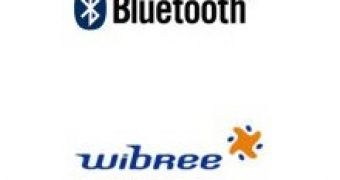The Bluetooth Special Interest Group and Nokia announced that the Wibree forum, the group specifying Nokia's low power wireless technology, will be merged with the Bluetooth SIG. As a result, the Wibree specification will become part of the Bluetooth specification as an ultra low power Bluetooth technology.
The announcement follows Nokia's stated intentions to incorporate the technology and its current forum into an open industry forum to ensure Wibree's wide adoption. "We are happy to see Wibree become part of the open Bluetooth standard, opening new market opportunities and space to innovate for the industry," said Jarkko Sairanen, Vice President of Corporate Strategy for Nokia. "The Bluetooth SIG is the optimal new home for Wibree."
Wibree technology has been in development since 2001 and it was formally announced by Nokia in October 2006. Wibree complements close range communications offered by Bluetooth, operating within a 10 m range and supporting data rates of 1 Mbps. Wibree is optimized for applications that require extremely low power consumption, small size and low cost. From the start, Wibree was designed to work with two implementation options: as a stand-alone chip or as a Bluetooth-Wibree dual-mode chip.
Several companies, including Broadcom, Casio, CSR, Epson, ItoM, Logitech, Nordic Semiconductor, ST Microelectronics, Suunto, Taiyo Yuden and Texas Instruments have contributed to the interoperability specification, profiles and use case definition of Wibree and will continue this work in the Bluetooth SIG working groups. Once the specification is finalized, the technology will be made available to the industry via the Bluetooth SIG.
"By including or referencing other wireless technologies like ultra wideband for high speed applications, near field communication (NFC) for association and now Wibree for ultra low power applications under the well-established Bluetooth profiles, we are opening up a host of new applications and functionality while keeping the user experience consistent," said Michael Foley, Ph. D. executive director, Bluetooth SIG. "Our members have been asking for an ultra low power Bluetooth solution. With Nokia's innovative development and contribution to the Bluetooth specification with Wibree, we will be able to deliver this in approximately one year."
The work of integrating the low power technology within the existing Bluetooth specification has already begun and the first version of the specification is expected during first half of 2008.

 14 DAY TRIAL //
14 DAY TRIAL //